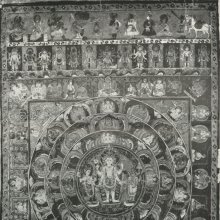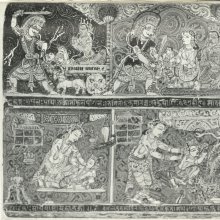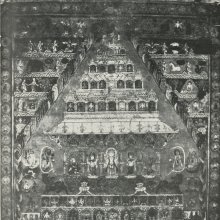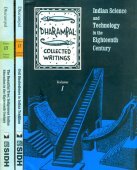Western India: 1 definition
Introduction:
Western India means something in the history of ancient India. If you want to know the exact meaning, history, etymology or English translation of this term then check out the descriptions on this page. Add your comment or reference to a book if you want to contribute to this summary article.
Images (photo gallery)
India history and geography
Source: archive.org: Cunningham’s Ancient Geography of IndiaWestern India comprised Sindh and Western Rajasthan, with Kachh and Gujarat, and a portion of the adjoining coast on the lower course of the Narbada river.
According to Xuanzang (Hwen Thsang), in Western India the provinces were divided between the kings of Sindh, Balabhi, and Gurjjara.

The history of India traces the identification of countries, villages, towns and other regions of India, as well as mythology, zoology, royal dynasties, rulers, tribes, local festivities and traditions and regional languages. Ancient India enjoyed religious freedom and encourages the path of Dharma, a concept common to Buddhism, Hinduism, and Jainism.
See also (Relevant definitions)
Partial matches: India.
Full-text (+64): Brahmavartta, Mapille, Aparanta, Maharashtra, Divyakatam, Pushkara, Suvarnashiras, Gujjara, Tapati, Cashtana, Hidimba, Anusuya, Travana, Milinda, Nagasena, Jahar, Komgana, Maruvadi, Marvadi, Bai.
Relevant text
Search found 54 books and stories containing Western India; (plurals include: Western Indias). You can also click to the full overview containing English textual excerpts. Below are direct links for the most relevant articles:
Maha Prajnaparamita Sastra (by Gelongma Karma Migme Chödrön)
I. Mind of avarice < [Part 4 - Avoiding evil minds]
Appendix 1 - Teaching the Rādhasutta at mount Makula < [Chapter X - The Qualities of the Bodhisattvas]
Appendix 8 - Apalāla (king of the nāgas) and Alāla (protector of Magadha) < [Chapter V - Rājagṛha]
Indian Medicinal Plants (by Kanhoba Ranchoddas Kirtikar)
44. Cocculus Leaeba, D.C. < [Menispermaceae (moonseed family)]
Introduction, part 4: Modern medicinal works
Introduction, part 3: The materia medica of Sanskrit literature
Kavyamimamsa of Rajasekhara (Study) (by Debabrata Barai)
Jain Remains of Ancient Bengal (by Shubha Majumder)
Historical Development of Jainism < [Chapter 1 - Introduction and Scope of the Present Study]
Miniature Tīrthaṅkara and Planatary Deities type of Candraprabha < [Chapter 6 - Iconographic Study of Jaina Sculptural Remains]
Lord Jhulelal: An Analytical Study (by Thakkar Harish Gopalji)
Part 11 - Lord (Adhipati) and Guardian (Dikpal) of West (Paschim) < [Chapter 4 - Analysis]
Part 13 - Sindh and Sindhi people < [Chapter 2 - Literature Review]
Matangalila and Hastyayurveda (study) (by Chandrima Das)
Gaja-Lakṣmī motif < [Chapter 4]
Elephants in Śaivism < [Chapter 4]
Metaphors related to Elephants < [Chapter 4]
Related products



